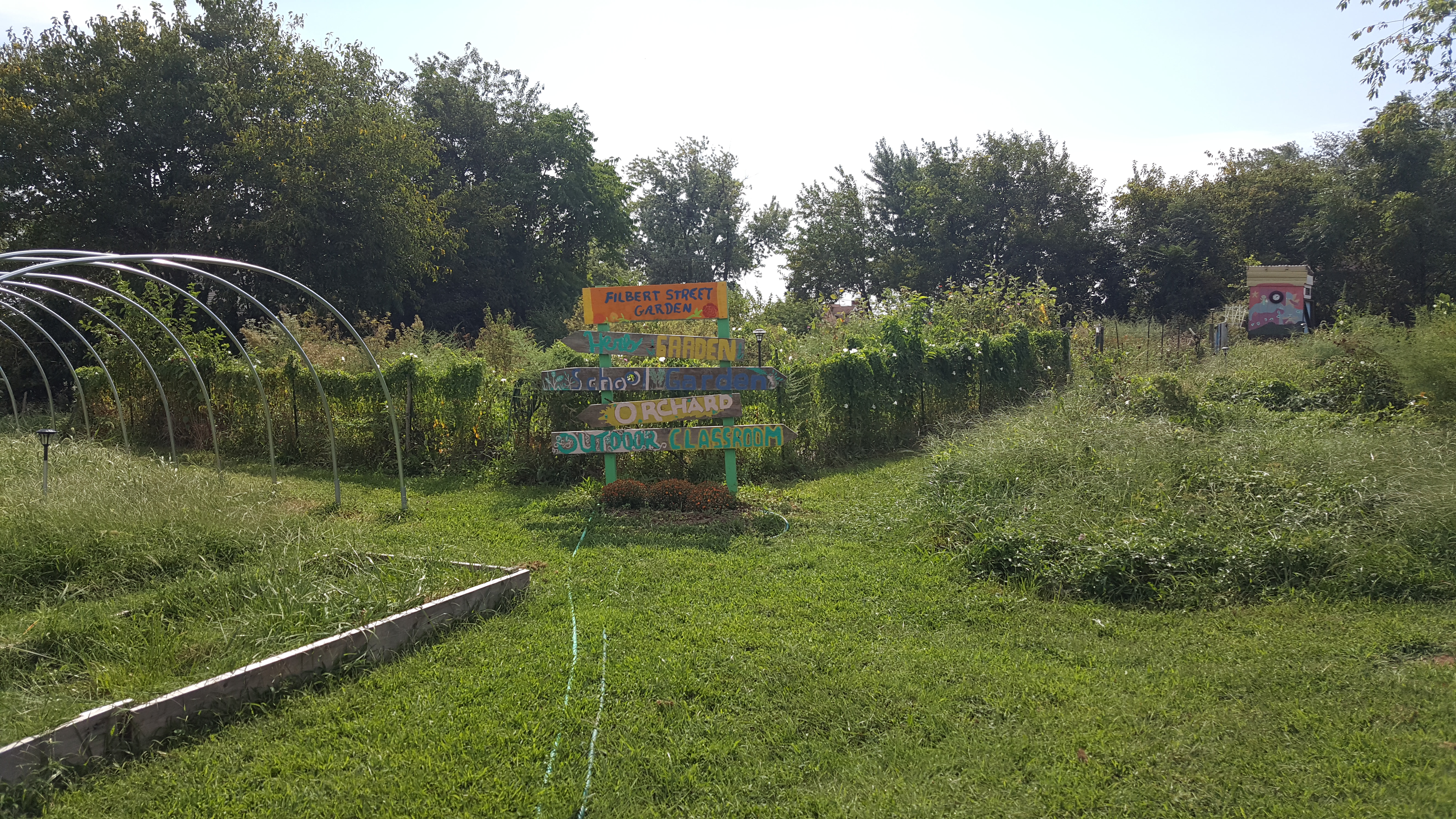The Filbert Street Community Garden is awesome. Located in the Curtis Bay neighborhood in south Baltimore, it is an impressive acre filled with raised beds, a native plant environment, educational spaces, beehive colonies, and a market farm. As you walk in, you can’t miss the CSX container that has been repurposed into the garden shed; it is big, yes, but it is also painted in vibrant colors and unique art and seems to contain a piece of the neighborhood’s soul within it. The container has a green, vegetated roof and in front of it stand solar panels that generate enough electricity to power lights throughout the garden.
This is what the Filbert St. Garden celebrated last month during its Ribbon-Cutting Celebration: the completion of several projects supported by local organizations, businesses, and community members that understand critical role the garden fills in the community.
The Filbert St. Garden provides fresh fruits and vegetables in a city in which one out of four residents live in a food desert, according to a 2015 report. A Johns Hopkins study of the area, specifically of Curtis Bay and the adjoining neighborhood Brooklyn, states that barriers to access to healthy food include “affordability” (said 57 percent of all respondents), and “inconvenience” (said 43 percent of respondents). A sizeable sample of 20 percent also cite “lack of knowledge of how prepare healthy food.”

The Filbert St. Garden addresses these barriers by providing community gardeners access to private plots on which they can grow food as they see fit. Garden Manager Rodette Jones taps into her gardening expertise and knowledge of the environment to educate the community about how food grows and the importance of a healthy diet. During the summer, the garden is maintained by student volunteers from nearby Benjamin Franklin High School. Garden volunteers sell produce at space provided by local Curtis Bay organization Drink at the Well.
The garden creates a tremendous positive value for the neighborhood, something I could sense as I walked around during the ribbon-cutting celebration talking to several people. What was most striking, however, is how everyone is also directly engaged in the overall environmental issues that affect the community.
Curtis Bay is one of the most industrialized areas in Baltimore. Historically, the neighborhood has been one of the most polluted zip codes in Maryland, with high incidences of illnesses such as heart disease and cancer. Besides the coal shipping facility that is within sight of the garden’s gate, Curtis Bay is also home to coal power plants, steel mills, and a medical waste incinerator.
Community members have shown, however, that they will not allow their neighborhood to continue being exposed to the harmful effects of rampant industrialization. In 2012, developer Energy Answers planned to build an incinerator less than a mile from the garden. The activist group Free Your Voice, part of local organization United Workers, led a successful grassroots campaign - largely student led - against the building of the incinerator, eventually resulting in Energy Answers withdrawing its original plan. Curtis Bay resident and leader of the movement Destiny Watford went on to receive the prestigious 2016 Goldman Environmental Prize for her work.
Ultimately, the health of the garden, the health of the environment around the garden, and the health of the community members that make the garden possible are all intricately connected. Ms. Jones does not fail to see this connection; she takes a wide view of all of the relevant issues as she spends her time outside of the garden networking on its behalf as well as advocating for environmental justice, fair development, and equitable access to land for Baltimoreans. As a Curtis Bay resident, she tells me having that “green spaces is critical to the community,” but that green spaces such as her garden cannot thrive in an environment that is not “healthy.” Polluted water and air not only cause documented health issues for the citizens exposed to them, but they also hinder the growth of critical green spaces that have the potential to be sources of food and economic activity - such as Filbert St.

The Filbert St. Garden is expansive and beautiful, and its existence makes an inspiring stand against the issues facing the community. It is practical in its purpose and symbolic in its vision at the same time. It is a great privilege to represent the Sierra Club in this space, and I am looking forward to continuing my work here for the next two months.
